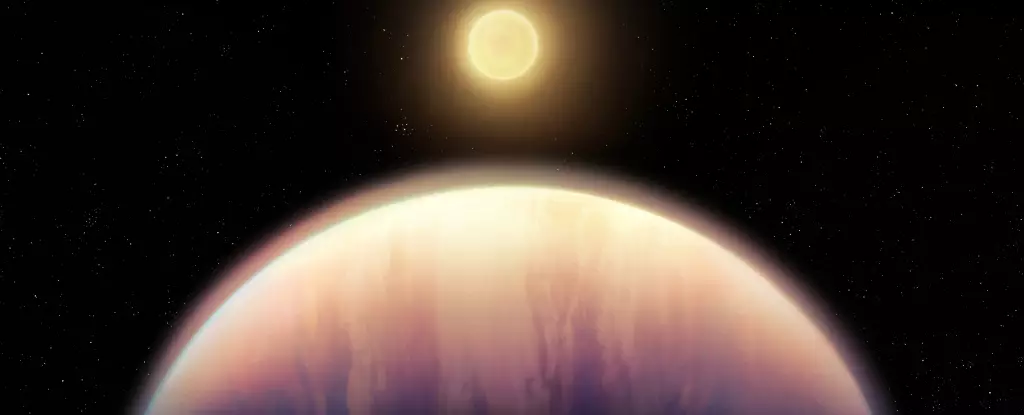The launch of the James Webb Space Telescope (JWST) has signaled a new era in space exploration and planetary science. With its advanced technology and unparalleled observational capabilities, JWST stands at the forefront of astronomical research, particularly in the realm of exoplanetary studies. It employs innovative methods to analyze the atmospheres of distant gas giants, illuminating essential details that could reshape our understanding of planetary formation. By focusing on the light of parent stars filtered through the atmospheres of orbiting planets, the telescope reveals a treasure trove of information about these distant worlds.
One of JWST’s most captivating achievements occurred during its study of the HR 8799 system, located approximately 130 light-years from Earth in the constellation Pegasus. This nearby star system features a youthful central star, slightly more massive than our Sun, and boasts the distinction of containing one of the first directly imaged collections of gas giant planets. The discovery of carbon dioxide in the atmospheres of HR 8799’s planets signifies more than just a molecular presence; it hints at processes that could have parallels in our own cosmic neighborhood.
The HR 8799 System: A Goldmine for Scientific Exploration
The HR 8799 system is particularly notable for hosting four directly observed gas giants, each ranging from five to ten times the mass of Jupiter. These planets—designated HR 8799 b, c, d, and e—orbit their host star at distances between 15 and 70 astronomical units. The age and character of the system make it a prime candidate for studying planetary formation processes, as its relatively young star, only about 30 million years old, provides a clear window into the dynamics of planetary evolution.
The intriguing aspect of HR 8799 lies in the potential similarities between its formation and that of our own Solar System. Theories suggest that giant planets like those in HR 8799 can emerge through two major methods: core accretion, where rocky cores accumulate gas gradually, or disk instability, where gas clumps together rapidly. Understanding which model is more prevalent can significantly influence our perception of how planetary systems develop across the galaxy.
Insights from the Latest Research
The groundbreaking research directed by William Balmer from Johns Hopkins University emphasizes the need to contextualize humanity within the wider universe. As noted in the exploration of both the HR 8799 system and another system, 51 Eridani, observations have confirmed substantial amounts of carbon dioxide. Such findings bolster the argument for core accretion as a dominant method of planet formation, aligning with the processes believed to have shaped Jupiter and Saturn within our own Solar System.
JWST’s sophisticated NIRCam coronagraph technology allowed scientists to mitigate the overwhelming brightness of stars to expose the dim emissions of their orbiting planets. This capability provides unprecedented access to specific light wavelengths absorbed by gaseous components, thereby permitting detailed analyses of the atmospheric composition of these exoplanets. The surprising revelation of higher concentrations of heavy elements in the atmospheres of HR 8799’s gas giants challenges previous assumptions and further refines our understanding of planetary diversity and evolution.
The JWST’s Role in Future Cosmic Discoveries
The JWST is more than just a tool; it is a game-changer in astronomical science. As the premier space observatory, it is set to lead future explorations not only of exoplanets but also of the fundamental structures and origins of our Universe. The direct imaging capabilities of JWST pave the way for further analyses that could reveal critical information about the atmospheres of other unknown, potentially habitable worlds.
The synergy between observational advancements and theoretical frameworks creates a powerful avenue for scientists who are dedicated to unraveling the mysteries of planetary systems. As we venture deeper into the cosmos, the trails blazed by the JWST will undoubtedly facilitate a greater comprehension of not just alien worlds, but our own place in the vast, intricate tapestry of the Universe.

